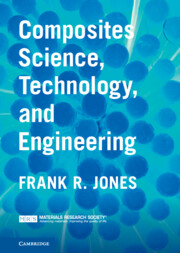Book contents
- Composites Science, Technology, and Engineering
- Composites Science, Technology, and Engineering
- Copyright page
- Contents
- Preface
- 1 Introduction
- 2 Fibres and Particulate Reinforcements
- 3 Matrices
- 4 Composites Fabrication
- 5 Mechanical Properties of Composite Materials
- 6 Mechanical Properties of Laminates
- 7 Fatigue Loading of Laminates
- 8 Environmental Effects
- 9 Joining, Repair, Self-Healing, and Recycling of Composites
- 10 Case Histories
- Index
- References
1 - Introduction
Published online by Cambridge University Press: 14 April 2022
- Composites Science, Technology, and Engineering
- Composites Science, Technology, and Engineering
- Copyright page
- Contents
- Preface
- 1 Introduction
- 2 Fibres and Particulate Reinforcements
- 3 Matrices
- 4 Composites Fabrication
- 5 Mechanical Properties of Composite Materials
- 6 Mechanical Properties of Laminates
- 7 Fatigue Loading of Laminates
- 8 Environmental Effects
- 9 Joining, Repair, Self-Healing, and Recycling of Composites
- 10 Case Histories
- Index
- References
Summary
Fibrous reinforcement of materials has been employed over many centuries to increase performance. Many early plastics materials of the late nineteenth and early twentieth centuries relied on ‘fibrous’ inclusions, while the development of glass fibres for polymer reinforcement in the 1930s introduced the material known as fibreglass. Eventually, with the development of boron fibres for metal reinforcement and the discovery of high-strength carbon fibres in 1964, the term composites came into general use. More recently, carbon nanotubes and related materials and graphene have led to the development of nano-composites. The Composites Age has arrived.
- Type
- Chapter
- Information
- Composites Science, Technology, and Engineering , pp. 1 - 21Publisher: Cambridge University PressPrint publication year: 2022



